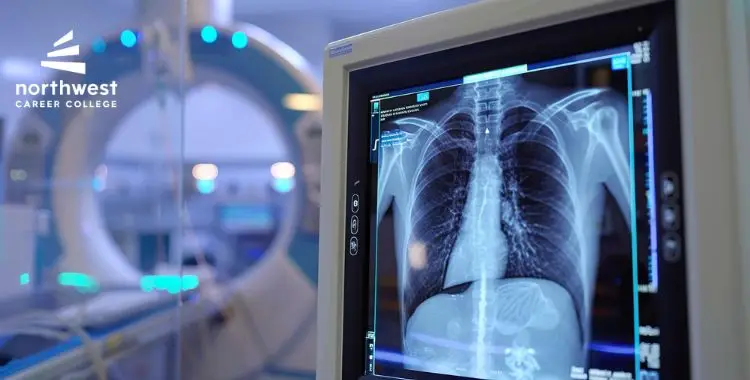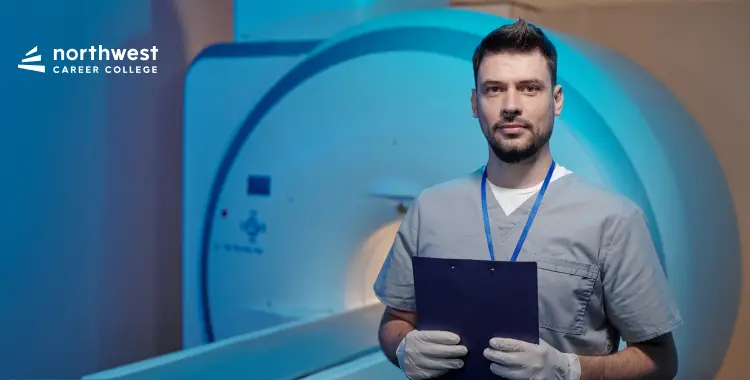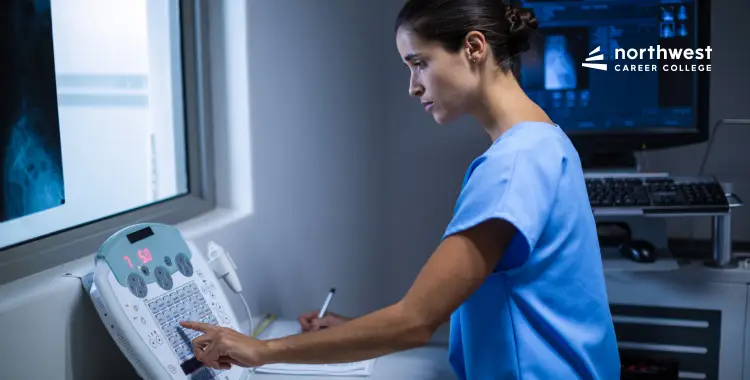Why Radiography Is Key to Early Diagnosis in Modern Healthcare
- November 4, 2025
- 1.2k views
- 4 min read
Many people don’t know they’re sick until it’s too late. Diseases like cancer or infections can grow quietly without showing signs, so early detection is essential. Radiography helps doctors see what’s happening inside the body before symptoms appear.
Students at Northwest Career College learn to apply this technology, work in labs, and hone skills in actual healthcare environments. But before discussing that, let’s examine why radiography is so valuable—and whether it’s your career choice.

Table of Contents
How Radiography Really Works
Radiography is not simply “taking X-rays.” It is a science that employs radiation and specialized machines to photograph what’s on the inside of the body. Doctors use these pictures to examine for fractures, infection, or possibly cancer.
Here’s what occurs:
- A small dose of radiation is passed through the body by a machine.
- Dense objects such as tumors or bones absorb the radiation, but soft tissues allow it to penetrate.
- They create an image when they interact with a detector or film.
Your role as a radiographer is to place the patient properly, prepare the equipment appropriately, and obtain a good-quality image. Often, the better your image is, the simpler it will be for the physician to diagnose early.
You also learn to use more advanced tools such as:
- Take many images and compile them together in a single detailed image.
- Displays images in real time to observe movements of things inside the body.
Radiographers do not make diagnoses, but your role plays a significant part in helping to reach accurate conclusions.
Why Early Detection Matters
The sooner a health issue is detected, the easier it is to address. Radiography catches problems before an individual is sick.
For instance:
- A small tumor detected early can be treated before it metastasizes.
- A minor bone fracture can be repaired before an outright break.
- Infection can be cured before severe damage is caused.
Medical studies show many severe conditions have a higher survival rate when treated early. That’s why radiographers are so important—you will help doctors act fast and help patients avoid more significant problems later.
As a student, learning this can help you find purpose. Each photo that you take can count.
What It’s Like to Be a Radiographer
Radiographers are employed in clinics, doctors’ offices, surgicenters, and hospitals. It’s a profession that combines science, patient care, and technology. It’s not a repetitive job. One day, you may assist with chest X-rays, and another with a CT scan.
You will also spend a lot of time with patients. Some may be frightened or in distress. One of your most significant roles is to make them feel at ease, to explain things to them, and to protect them. Communication is equally essential to good technique.
Students at Northwest Career College:
- Train on genuine machines in campus labs.
- Take both in-person and online courses.
- Gain practice with actual patients through externships
- Study from certified, knowledgeable instructors
This hands-on approach helps students feel confident and career-ready from day one.
Become a Radiographer Today
Radiography allows doctors to detect disease early, frequently before symptoms even occur. It translates to faster treatments, improved results, and saves lives.
At Northwest Career College, many students see this as a career and an opportunity to make a difference in patients’ lives. In 18 months, students learn everything they need to succeed in healthcare settings.
From home through online courses, from our on-campus facilities, with clinical training, you’ll be ready to take the ARRT certification exam. We offer financial aid, and our graduates find work in hospitals, clinics, or centers. Take that first step today to a new career that changes lives.




